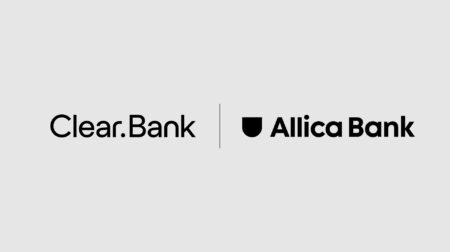CBDCs and stablecoins transition to the payments mix

Digital assets are gaining ground due to fundamental shifts in consumer behaviour, technological advancement, and an emerging regulatory regime.
For consumers, digital money is already our mainstay with the proliferation of card payments, online payments and cash and investment apps. Cash use has declined in the UK from about 55% of total UK payments a decade ago, to 15% today and is forecast to decline further to approximately 6% by 2030. Meanwhile, awareness and adoption of cryptocurrencies is growing, with government studies revealing that one in 10 people in the UK have held crypto at one time.
Recent crypto market volatility has made some examine cryptocurrencies as a store of value or medium of exchange, leading to renewed interest in stablecoins due to their ability to deliver transparent, low-cost transfers of value at speed. We expect new rules on stablecoins from both HM Treasury (HMT) and the Financial Conduct Authority (FCA) later this year and these should provide more clarity for UK issuers and users.
Meanwhile, HM Treasury and the Bank of England (BoE) are progressing their work to create a digital pound. The recent Central Bank Digital Currency (CBDC) consultation set out their view that while they have not yet decided to issue a UK CBDC, a UK CBDC is likely to be operational by 2030. The policy makers are designing it to be used by households and businesses for everyday payments (in-store and online) and to be interchangeable with cash and bank deposits.
So how do we unpack these developments and how will these trends pan out over the next three to five years?
ClearBank recently hosted an event examining the potential development and widespread adoption of CBDCs and stablecoins. We were joined by two experts, Riccardo Tordera Ricci, Head of Public Policy & Government Relations at The Payments Association, and Kunal Jhanji, Managing Director and Partner at Boston Consulting Group (BCG).
A successful CBDC will undoubtedly require strong public-private collaboration. And as central banks are not looking to create direct-to-consumer relationships, private companies will be required to manage services for payment end users. These factors will lead to a fundamental question around who pays and commercial incentives for participation.
“You cannot expect private entities to make multimillion pound investments without really considering about their return on that investment. So, if various governments, regulators and central banks are keen to move to a new form of digital currency there will need to be commercial frameworks agreed and in place,” BCG’s Kunal Jhanji explained.
The BoE intends for private firms to use APIs to operate commercial services on top of the BoE ledger.
“I think that's the right model. Most of the cost is on the intermediaries for their own service builds and that makes it a genuine public private partnership,” Jhanji added. “It is the best way forward. You need the private industry to invest because that's when your use cases will become more appealing to the end consumer.”
A key question of the current consultation is confirmation of market interest in the use cases identified and commercial views on business cases related to support these.
A central bank operated ledger would create a substantial concentration risk – a single point of failure and a high value target for cybercrime. This may lead to a larger debate around liability frameworks for service providers, as well as how equipped those suppliers are to manage their own cybersecurity and resiliency challenges.
Finally, any new CBDC system will need to be interoperable with other central bank financial networks and the existing UK payments infrastructure.
As BCG’s Kunal Jhanji noted: “The UK has been a front runner in implementing real-time payments infrastructure that plays a critical role in underpinning the entire economy. You can’t just forget that investment. So how any new element – in whatever form it might take - fits into that and the ability to talk seamlessly to each will be critical.”
As the industry works on solving for design and functional elements, it also cannot forget the need for public education and the inevitable discussions around privacy and control.
“There will be debates that we will have to face and persuade the public opinion that this is not a way for the government to get into their lives. There will always be people who will refuse to use it,” explained The Payments Association’s Riccardo Tordera - Ricchi. “But at the same time, we can’t forget that a credit card firm knows where you are spending your money and people happily accept that. And even though a central bank is not the state, they are seen as related to them, so we must be realistic...that perception will be hard to shake off.”
To date, the BoE has suggested a two-tier issuance model, where the central bank provides clearing and settlement on the ledger but does not have access to payment end user identification which would be strictly held by a wallet provider. The BoE has gone further, stating there would be levels of opacity so they can only see certain aspects of the funds being transferred rather than specific details. The wallet provider would therefore be responsible for onboarding customers, monitoring for financial crime and providing all customer-facing services.
“We don't today fully understand the dynamic and how it would work. But the two-tier issuance model does create some balance so that consumers are not reliant on a single entity. The customer service, the point of contact, all of that will be with the service provider of the wallets rather than the central bank because they won’t handle that direct-to-consumer contact,” Tordera - Ricchi added.
If the fundamental design aspects and business models for CBDCs are solved, then what would they be used for and how would these use cases be superior to how we are using digital money today?
There is also an aspect of what comes first. Does the industry need viable CBDC use cases to entice consumers and businesses to take up these forms of money, or does the industry need to convince the public to take CBDCs up before those use cases are clear?
That means creating the right incentives for commercial participants in the ecosystem, so it’s less about generic scenarios and use cases and more about reimagining how entire processes might work.
“We are looking at bringing together some segments of our society, which are still heavily reliant on cash, and CBDC will carry some functionality of cash. Getting them into the fold of the ecommerce, offline payments, and those type of use cases,” explained BCG’s Kunal Jhanji. “I’m bullish. But I’m also a realist in the sense that the use of CBDCs will primarily come from infrastructure providers being allowed to generate a level of programmability that creates a very different use of that money versus what we have today.”
On the other hand, stablecoins offer today viable use cases and provide a more stable store of value compared to other forms of cryptocurrencies. The use cases include on/off ramps for crypto exchanges, remittances, peer-to-peer transactions, lending and staking and gaming. They do, however, still require regulatory guardrails to allow issuers, merchants and consumers to become comfortable with using them more widely than fiat to crypto ramps.
“I see stablecoins as more immediate and we have a precedent with how the UK implemented e-money. That unleashed the potential for the fintech revolution, open banking and while not perfect supported as wave of innovative ideas,” outlined Tordera - Ricchi. “And now with stablecoins, or what we might call ‘s-money’, we have the next generation. That requires a similar framework for issuers to be regulated entities while remaining agile and flexible to emerging use cases. So, in my vision, there is a huge case for stablecoins to be an integral part of the payments mix.”
There is not yet a consensus on which new form of crypto money will dominate. But between the regulators, central banks, and private market participants like ClearBank, we are working to identify key factors such as interoperability, commercial opportunities for financial intermediaries and appealing and enduring use cases for consumers, which may accelerate or prohibit adoption.
Stay with us as we continue to monitor how the design fundamentals and use cases evolve for new forms of digital money: retail CBDCs, stablecoins or something else entirely.
Authored by Betsy Dorudi, Head of Public Policy at ClearBank


